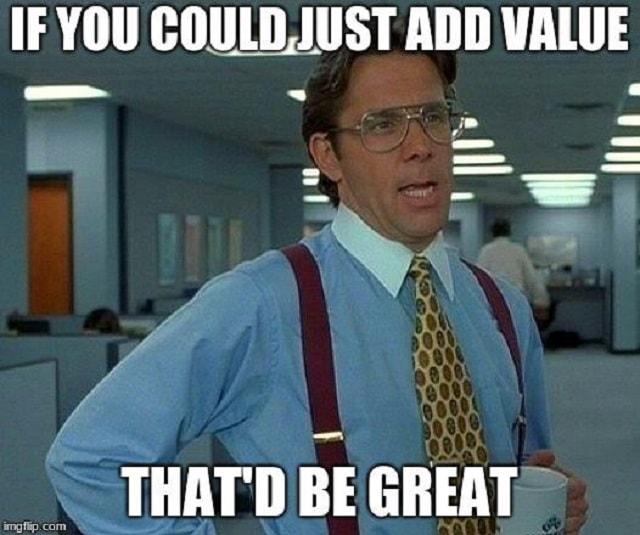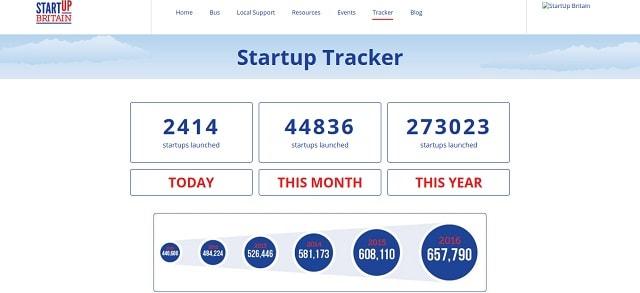With technology changing where and how we work, freelance businesses are growing by the day. If you’ve ever wondered how to start a consulting business of your own, you’re far from alone.
For instance, in the U.K. where I’m from, 96 percent of our businesses are considered micro businesses and have less than 10 employees. To put that into context, in 2017 there were 5.7 million businesses in the U.K. and 5.5 million of them were micro businesses.
That’s pretty crazy, considering there are only 65 million people in the U.K. I’m no mathematician, but that’s about 1 in 12 people running their own micro business.
This cool Startup Tracker from Startup Britain further illustrates how many people are starting small businesses. You can join them by starting your own consulting business — and you don’t need gobs of money to do it. Here’s how.
Launch your business in minutes with GoDaddy Airo™
So what is a consulting business?
Consulting is a broad term that can apply to just about any industry. For instance, you could provide consulting services in any one of the areas below:
- Graphic design
- Web design
- Web development
- Project management
- Accounting
- Wealth management
- Operations management
- UI/UX
- Marketing
- Digital marketing
- Media buying and planning
- PR
- Wedding planning
- Fashion
- Ecommerce
- Retail
- Property
- Architecture
The list is endless. You can start a consulting business in any field, offering any service, as long as you add value. Also, here is how you can register your business officially.
Here are some other small business ideas you can check out, businesses that are easy to start from home, or as a side hustle.
What is adding value?
Adding value means enriching the position of your client. After you complete work for your clients, they should be in a better position than when they started — whether that’s with a better website, improved finances or a more efficiently run company.
Adding value means delivering on your promises, and consulting businesses are all about value.
Your clients pay you to add value and improve their position. If you can add value to a particular group of customers in some way, you are halfway to creating a successful consulting business.

How do you add value?
There are two ways you can add value for your clients:
- Work in a field for several years, discover common pain points, and then solve them through your consulting business. A pain point is something that frustrates the customers in the market and isn’t being adequately addressed through current market offerings.
- Conduct market research by asking a particular group of people what their pain points are, what the solution would be, and what they would pay for the solution.
The first option is how most small businesses start. You work in a particular field for a certain amount of time, then head out on your own to continue doing the same thing (providing value, using a proven formula).
Or, you can strike out on your own and add more value doing things better than the status quo. It was Brian Tracy who said, “You only need to be 10 percent better than the competition to make your fortune.” And it’s very true.
If everyone is doing X, Y and Z and you offer them W, X, Y and Z, who do you think is going to pick up the work?
If you already have a consulting business and business is stagnant, think back on your customers’ pain points. What annoyed them about other vendors? What did they find frustrating about working with you?
Steve Jobs, for example, started Apple because he thought the competition sucked. The technology was hard to use, and he knew computers would never become widely adopted until everything was so easy your grandma could use it.
How to start a consulting business
You don’t need an MBA, reams of data or mountains of pie charts to start a consulting business. Just use common sense and follow these four simple rules:
- Do something well that enriches the position of your target market in some way.
- Provide excellent customer service so your clients love you. Exceed their expectations and the referrals will come.
- Live and die by your cash flow. Cash flow is king. Businesses fail because they run out of money chasing invoices and overextending themselves with too many costs. (I know from experience doing this with my first business.)
- Create a company name, make your own logo and build a simple website. And pick a marketing channel to win work.
The rest comes down to working hard and being consistent.
Starting out with a $0 budget
Now I’m going to tell you how to start a consulting business with a $0 budget. All you really need is a proposal. A proposal is a simple document outlining what you intend to do for your client, what will be included, the timeline and the costs. You can do this for free with a Word document.
But here are the steps I’ve taken in the past to start consulting businesses with a $0 budget.
- Brainstorm business ideas - here is a list of online business ideas, check it out and see which ones work for consultancies.
- Decide on a business idea.
- Pick a company name. (Try our company name generator).
- Create a value proposition (a pitch for the business) or put together a business plan - we have a free business plan template that you can use.
- Build a list of your target market (companies, names, email addresses).
- Send them your pitch.
- Arrange a telephone call with interested leads.
- Discuss your pitch and flesh out your proposal on the phone.
- Send the prospective customer a proposal that contains the contents of your discussion.
- Once they accept your proposal, begin work.
Free tools to start your consulting business
Yes, it’s true. There are free tools you can use to start your consulting business.
- WordPress blog
- Facebook profile
- Twitter profile
- LinkedIn profile
- GoDaddy Website Builder
- GoDaddy Free Logo Maker
Related: Use our quick guide to learn how to create your own logo.
The slow and steady inbound marketing approach
If you don’t want to do any outbound sales, you can pick up your first clients using inbound marketing.
Inbound marketing looks like this:
- Understand your customer.
- Create free educational content that helps your customer in some way.
- Distribute this content across your social media profiles (Facebook, Twitter, LinkedIn).
Repeat process consistently until leads appear.
The keys to success
Now you have the tools to build an initial sales pipeline. Don’t give up if you don’t achieve success instantly. Building a business from scratch takes time, but the universe rewards hard work and consistency.
You might have to consistently create and share content every day for two to three months without generating any work, but I can guarantee that if you keep at it, improving and refining your approach, you will pick up work.
You have to be comfortable with uncertainty and setting your own agenda in every aspect of your business.
Nobody will tell you what to do or how to do it. It’s up to you to do everything. Win the clients, deliver the work, handle your finances, tweak your website, know your market — you name it.
Don’t spend anything until you have proof of concept
Nobody gets it right the first time, which is why you shouldn’t spend any money until you’ve proven your business will work. This is why angel investors and venture capitalists look for traction and proof of concept before investing.
Your idea for your consulting business might be off, and nobody might want what you’re offering. This is no big deal if you’ve just invested a couple of days creating a landing page, a pitch and a lead list. But if you’ve spent thousands of dollars trying to get everything perfect for a big launch and then nobody is interested, you’ve just lost a load of money.
As a rule of thumb, you should be able to acquire a few clients without spending any money.
If you can’t, it’s probably a red flag. You might need to go back to the drawing board and refine your idea, either changing your offering or the market you’re pursuing.
But I read a story about a guy who spent one year planning everything perfectly, and he made millions.
Congratulations to that guy. Unfortunately, these cases are the exception not the rule. There’s only one Mark Zuckerberg and only a handful of people like Bill Gates, Jeff Bezos and Elon Musk on the planet.
That doesn’t mean you can’t be successful, or even incredibly successful. It just means that in 99.999999 percent of cases success isn’t going to happen like this.
So save yourself the gray hairs, stress and injured wallet. Start lean, keep your investment minimal, work hard and be patient. Once you pick up traction, go full throttle and give your idea 100 percent.








